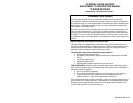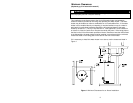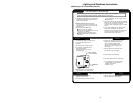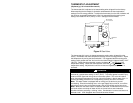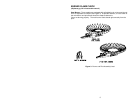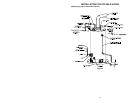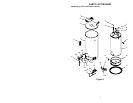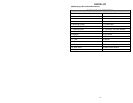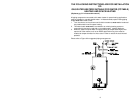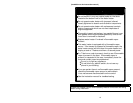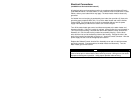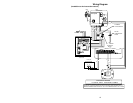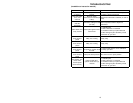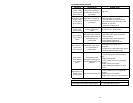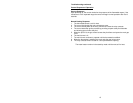
4
THERMOSTAT ADJUSTMENT
(Replaces pg. 19 in instruction manual.)
The thermostat dial is adjusted to its lowest setting when shipped from the factory.
When adjusting the thermostat, it should be remembered that lower temperature
settings are more energy efficient. To adjust the thermostat, turn the dial clockwise until
the minimum acceptable temperature is set. It is suggested that the starting point
setting not exceed the 120°F (49°C) or “HOT” setting on the thermostat.
HOT
L
O
W
H
O
T
V
E
R
Y
SWITCH SHOWN
IN "ON" POSITION
A
B
C
THERMOSTAT
DIAL
ON
OFF
STATUS
Honeywell
Figure 2. Gas Valve.
The thermostat dial is set to its lowest temperature setting when shipped from the
factory. Remember that lower temperature settings are more energy efficient. Adjust
the temperature by turning the thermostat dial. It is suggested that the starting point
setting not be greater than the “Hot” mark on the thermostat dial (approximately 120°F
[48.9°C]). Rotate the thermostat dial counter-clockwise
to decrease the
temperature setting. Rotate the thermostat dial clockwise
to increase the
temperature setting. Adjust the dial until the minimum acceptable temperature is
achieved.
DANGER
Hotter water increases the risk of scald injury. Scalding may occur within five (5)
seconds at a temperature setting of 140°F (60
°
C). To protect against hot water injury,
install an ASSE approved mixing valve in the water system. This valve will reduce
point of discharge temperature by mixing cold and hot water in branch water lines. A
licensed plumbing professional or local plumbing authority should be consulted.
Note: This water heater is equipped with an energy cut out device to prevent
overheating. Should overheating occur or the gas supply fails to shut off, turn off the
manual gas control valve to the water heater, and call a qualified service technician.
Note: Whenever the water heater is filled with cold water, condensate will form on the
cool tank surface and drops of water will fall on the hot burner and combustion
chamber surfaces producing a “sizzling” noise. Condensation is normal and does not
indicate a leak. It will disappear when the tank becomes heated.



